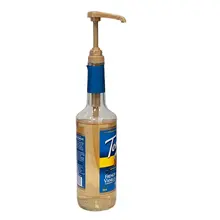Popular in your industry













































































Top categories
About masking film
Introduction
In the ever-evolving world of surface protection, masking film has emerged as a game-changer. This lightweight, temporary protection film, which clings statically to surfaces, has revolutionized the way we protect surfaces during painting or repair work. With its easy application, static cling, and light-permitting properties, masking film has proven to be a versatile tool in maintaining a clean and efficient workspace. This article delves into the science behind masking film, its evolution, types, benefits, and its environmental impact, along with real-world case studies that demonstrate its effectiveness.
Understanding Masking Film: An Overview
Masking film is a lightweight, temporary protection film that clings statically to surfaces, ensuring a tidy and mess-free workspace. It applies easily, stays in place, and allows light in when placed over a window. The static cling ensures the film won't shift during work, making it perfect for achieving a clean edge and protected surface. There are two main types of masking film: pre-taped and non-taped, each with its specific uses. Choosing the right size of masking film is crucial for efficiency and cost-effectiveness.
The Evolution of Surface Protection: From Traditional Methods to Masking Film
Surface protection has evolved significantly over the years. Initially, natural resins were used, but they had limitations, including their long-term removability and limited saturation of colors. This led to the exploration of synthetic resins, which offered more durability. However, they too had their drawbacks, leading to the development of multicomponent systems. These systems, based on combinations of layering and the addition of stabilizers and polymeric additives, allowed for a balance between a varnish coating's protective capacities, its long-term stability and removability, and the desirable visual effects it could produce. This evolution paved the way for modern solutions like masking film.
The Science Behind Masking Film
Masking film, also known as Painter’s masker, is a versatile tool used in painting. Its adhesive edge can be run along surfaces like walls or windows, and the film unfolded to cover the area. This is particularly useful when painting large areas, as it saves time compared to traditional methods like using newspapers. Additionally, masking film is perfect for particle-collection, as its static-cling almost magnetically pulls paint and dust particles toward it, providing enhanced protection for the surfaces underneath.
Types of Masking Film and Their Specific Uses
There are three types of plastic masking film available on Alibaba.com. The first type is ideal for furniture and floor protection, featuring an electrostatic charge to prevent slipping or fluttering. The second type, with its static cling, adheres easily to surfaces and stays in place during paint spraying. Lastly, the third type is a time-saving solution for masking large or small surfaces, suitable for both indoor and outdoor use, and leaves no adhesive residue. Each type is designed for specific uses, ensuring optimal results.
Key Benefits of Using Masking Film for Surface Protection
Masking film offers numerous advantages over traditional masking methods. It's perfect for jobs where masking tape and paper won't suffice, especially when covering larger areas. The film is form-fitting and comes in long rolls of varying widths and lengths, making it versatile and adaptable. It's also efficient and easy to use, often supplied on a roll that can be attached to a hand masker, saving time by applying masking tape simultaneously. The electrostatic charge on some films attracts dust particles, reducing cleanup time and enhancing the work environment's cleanliness. By choosing the right size, you can avoid waste and further reduce costs.
Cost-effectiveness
The masking solutions available on Alibaba.com are designed to cover all the needs of professional masking applications in automotive repair shops, providing an effective solution to save money without sacrificing performance. The core product line guarantees excellent performance in the most critical conditions, providing strong hold on different surfaces and withstanding the temperature required in baking cycles. The tape can be torn by hand and does not leave adhesive residue upon removal, conforming well to curved and irregular surfaces. This cost-effectiveness is also seen in the premium masking drop film, designed to mask off wide areas with a single and fast application.
Efficiency and Ease of Use
HDPE masking film is a game-changer in the realm of surface protection due to its efficiency and ease of use. Its unique composition and electrostatic properties make it a lightweight, easy-to-use solution to prevent overspray. The film is easy to adjust on the vehicle due to its clarity. The application process is straightforward: simply unwind the film, spread it over the vehicle, cut it over the area to be painted, and fasten it to the surface edges with masking tape. This makes HDPE masking film a fast and easy-to-apply protection during booth painting.
Versatility and Adaptability
Masking films are versatile and adaptable, ideal for jobs where traditional masking tape and paper fall short. They can cover larger areas, making them perfect for large surface spraying. Masking films are supplied on a roll, either single size or pre-folded, allowing easy application to the surface with a hand masker or manually. They are used in various situations, including respraying cars or updating UPVC window frames. The electrostatic charge on some films attracts dust particles, reducing clean-up time and maintaining a clean work environment.
Enhanced Protection
Masking films offer enhanced protection for various surfaces during painting processes. They are designed to prevent damage or overspray, ensuring a neat and professional finish. Some films are corona-treated to hold paint or mist overspray effectively. They are suitable for use on any materials and surfaces, including metal, steel, and wood. Most masking films are temperature resistant, making them ideal for use in low-bake ovens and other artificial heating and drying systems. Additionally, the corona treatment on many masking films makes them water resistant, as they hold any liquid on the surface without absorption.
Environmental Impact of Masking Film
Masking film, a specialized form of masking tape, is generally considered more eco-friendly than traditional masking tape. It's made from polyvinyl alcohol and designed to create sharp, accurate edges on painted or finished surfaces. Once applied, it can be easily peeled off, leaving clean lines and protecting the underlying surface from overspray or drips. However, like other types of tape, it's important to consider the end-of-life impact of masking film. While it's more sustainable, it's still not fully biodegradable or recyclable, making its disposal a concern.
Case Studies: Successful Implementations of Masking Film
Masking films have proven their worth in various real-life scenarios. For instance, general purpose polyester tape has been effectively used in the Aerospace, Print, and General Industrial Market. It handles well, sticks instantly without stretching or pulling, and reduces time and re-work by avoiding adhesive transfer or poor paint lines. Another example is the use of automotive design masking tapes, which provide secure adhesion on e-coated and painted surfaces, ensuring reliable and fast processes during serial and repair painting. These case studies demonstrate the powerful problem-solving capabilities of masking films.
Conclusion
Masking film has undoubtedly transformed the landscape of surface protection. Its versatility, efficiency, and cost-effectiveness make it an indispensable tool in various applications, from automotive repair shops to large-scale industrial painting. Despite its environmental concerns, it is a more sustainable option compared to traditional methods. The case studies of successful implementations further underscore its potential in providing enhanced protection, reducing cleanup time, and ensuring a professional finish. As we continue to innovate and improve, masking film's role in surface protection is set to become even more significant.



















